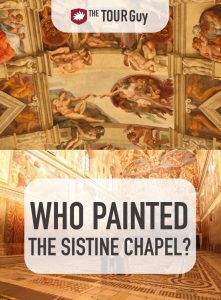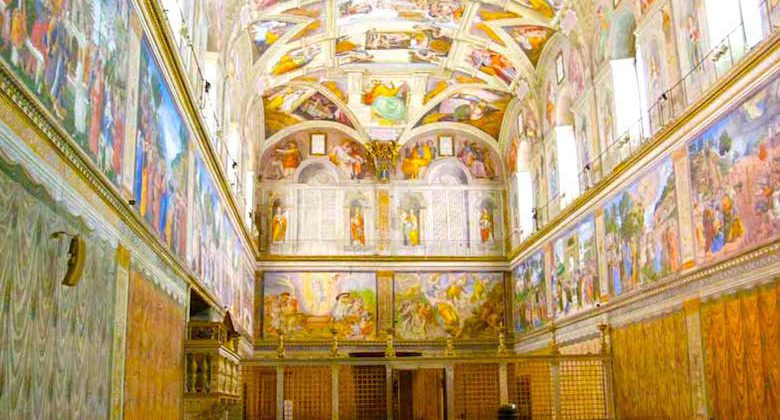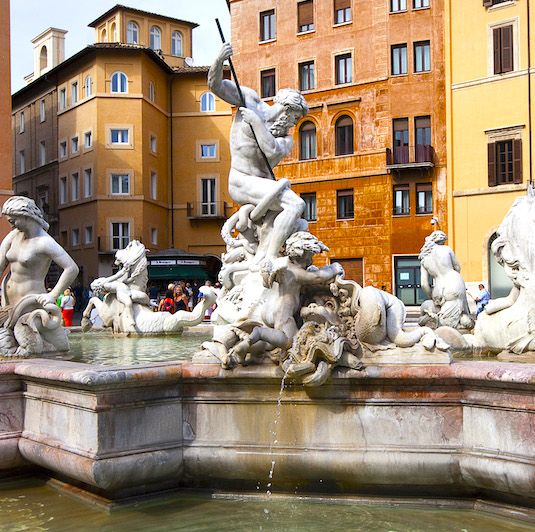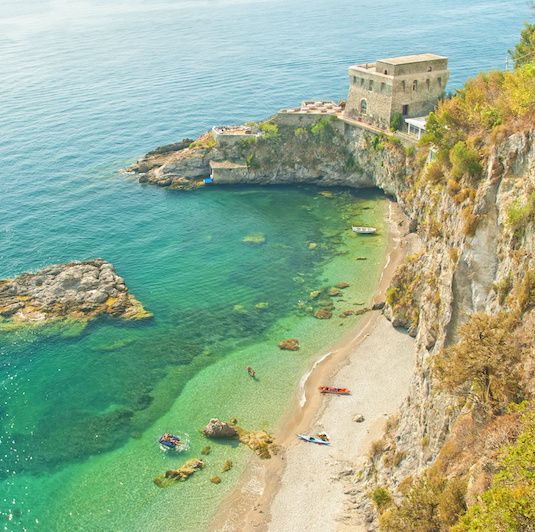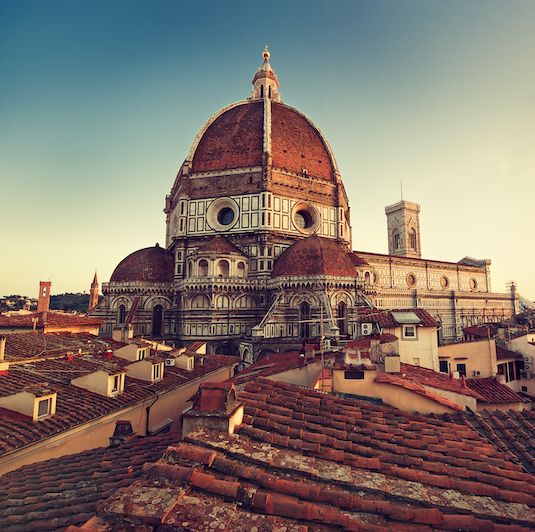Imagine dedicating 10 years of your life to creating one of the most iconic artworks of all time. Imagine living and sleeping in the same room you’re working in. 500 years ago, a great Renaissance artist created the project that would define his career. Now, nearly 20,000 people see this glorious chapel every single day. This artist can be credited with the creation of several pieces of art, including the David and the Pietà. So, who is it? Who painted the Sistine Chapel?
What is the Sistine Chapel?
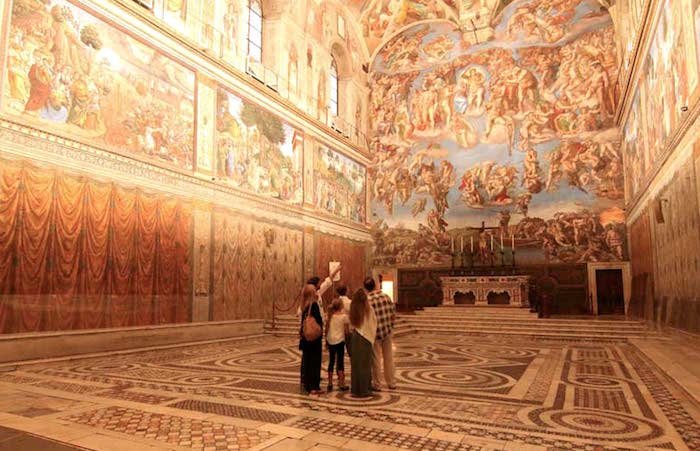
The Sistine Chapel is in the official residence of the Pope, the Apostolic Palace. Originally known as the Cappella Magna, the chapel’s “new” name came from Pope Sixtus IV. Pope Sixtus IV committed to restoring the chapel between 1477 and 1480. Today, the Sistine Chapel serves as a private chapel of the pope. It also serves as the meeting place for cardinals around the world to come together and elect a new pope in what is called the Conclave.
The Sistine Chapel is often considered one of the most famous landmarks in the world. People flock from all over the world to experience the immensity of the artwork of this holy chapel. Additionally, people most closely associate the beauty of the Sistine Chapel with its floor-to-ceiling frescoes. Many of Italy’s most celebrated Renaissance artists contributed to the beautiful artwork we see today in the Sistine Chapel.
So, the answer to the age-old question: How many artists helped to paint the Sistine Chapel. Therefore, there are really two answers to this question. To simplify it, we will break it down into Early Renaissance artists and then Michelangelo. When you walk in today you will see the side panels and the ceiling. Early Renaissance painters painted the side panels and Michelangelo painted the ceiling. Make sense? Let’s go more in-depth.
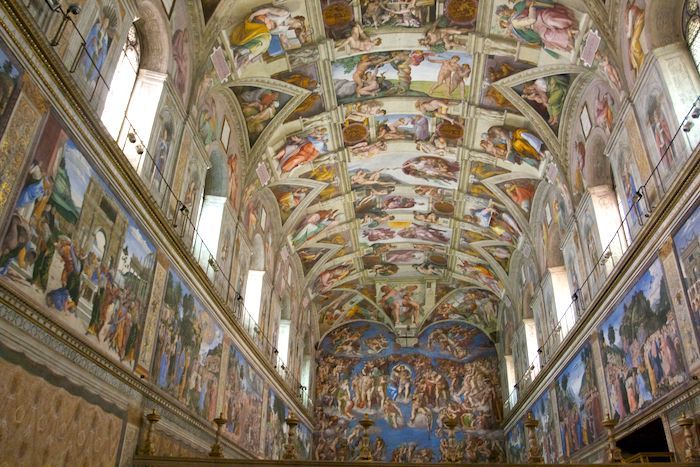
Our Sistine Chapel & St. Peter’s Basilica Tours
Because of our strong relationship with the Vatican, we’re able to provide the best Vatican tours in Rome. By finding only the most seasoned and engaging guides, we offer a variety of skip-the-line Vatican tours with special access to St. Peter’s Basilica.
The Early Renaissance Painters
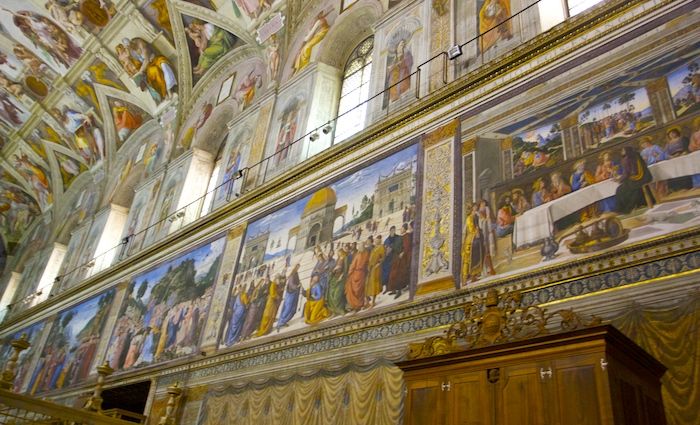
So who were these early Renaissance painters? They were basically the most famous painters on the planet (in Western civilization at least). These early masters lived one generation before painters such as Michelangelo, Raphael, and Da Vinci.
They came from various cities, but I will name them here:
- Pietro Perugino
- Sandro Botticelli
- Biagio D’Antonio
- Cosimo Rosselli
- Luca Signorelli
- Domenico Ghirlandaio
If you don’t happen to know the names above, don’t worry. I would say the majority of people who have not studied art history do not know them so it’s ok. The most important takeaway from the artists above is the fact that they made beautiful artwork. They also inspired later artists to produce even more beautiful artwork.
To hit this point home, Pietro Perugino was Raphael’s teacher and Ghirlandaio was Michelangelo’s teacher. This lets you know how important these artists were in order to push the next generation to the highest level the world has ever seen as far as artwork. Speaking of Michelangelo, let’s discuss the master
Michelangelo’s Early Years
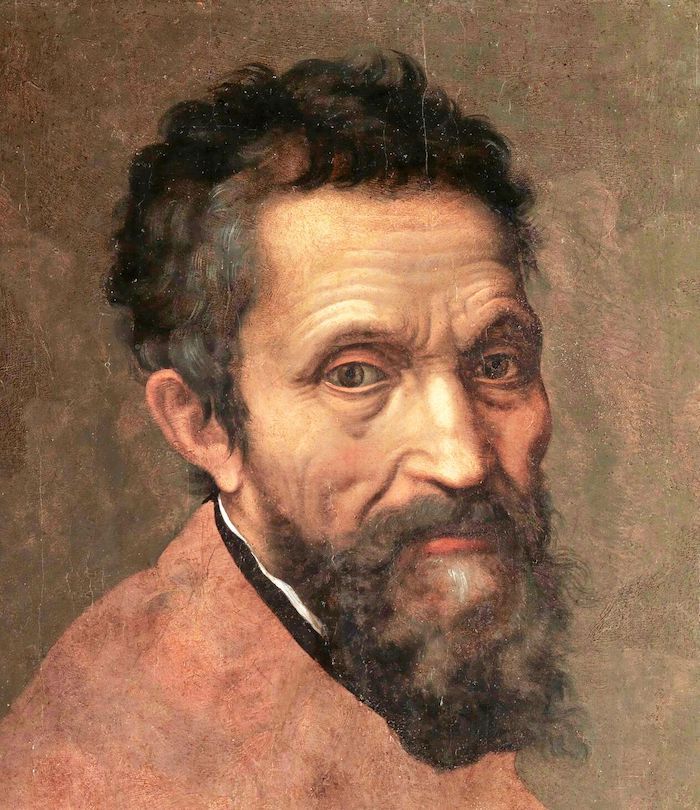
Michelangelo grew up just outside of Arezzo. Michelangelo’s father was set on his son working an administrative job like he did, but was upset when he realized that the future master preferred sketching buildings and artwork than his studies. As a result, he eventually gave in and set him up with an art apprenticeship. At age 13, Michelangelo began to work with prominent Renaissance artist Domenico Ghirlandaio. Can you imagine the loss to the world if his father persevered in making him study?
In just a few years, Lorenzo de’ Medici asked Ghirlandaio to send him his two greatest students. Luckily, Michelangelo made the cut. Consequently, Michelangelo had the opportunity to study art from an academy founded by the Medici family. There, he was able to hone his craft in the presence of the greatest minds in Italy. Mixing with nobles would also benefit him in the future, as they would go on to have the means to commission him for projects.
Michelangelo’s Early Projects
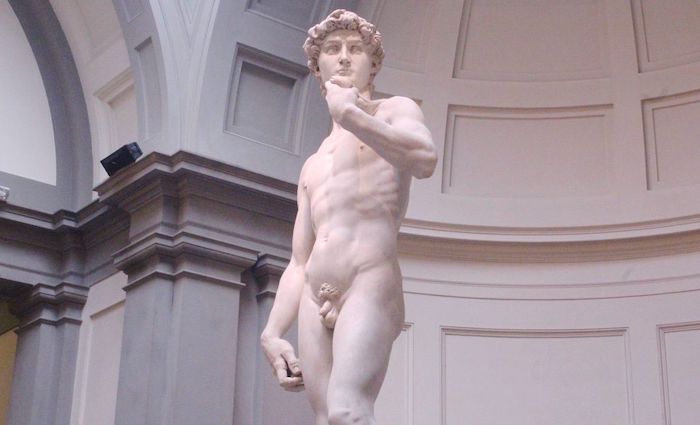
The Pietá
Michelangelo’s two main early works were the Pieta and the David. To better understand the artist, we need to discuss these two pieces just a bit. Michelangelo sculpted La Pietà at the very end of the 15th century and depicts Jesus after his crucifixion laying in Mary’s lap. A French cardinal named Jean de Bilheres commissioned Michelangelo to create a sculpture to go into a side chapel of St. Peter’s Basilica in 1497.
With a large block of Carrara marble and his irrefutable artistic craft, Michelangelo within a year created this incredibly detailed work of art. When he finished the statue, he was still relatively unknown at 24 years old, so people starting attributing the statue to someone else. That pushed him to actually carve his name in the statue writing Michelangelo from Florence has made this.
The David
David is the main attraction in the Accademia art gallery and without argument is the most visited sculpture in Florence. Michelangelo “freed” David from his marble prison in three years. This enormous statue is 17 feet tall and modeled after the old-testament figure who defeated Goliath at the Valley of Elah when the Israelites (David) fought the Philistines (Goliath). The statue is considered Michelangelo’s masterpiece, at least in terms of sculpting.
The Statue of David gets its undoubted fame for a few reasons. Its creator, Michelangelo, was the only sculptor at the time willing to work with this particular type of marble. Out of undesirable marble came one of the most desirable and striking works of art known in history.
Besides the height of the statue, did you know that his feet are also huge? The statue was actually sculpted to adorn the roof of Florence’s Cathedral Dome. Given that prior knowledge, Michelangelo made David’s feet a bit bigger to make the statue more sturdy. However, David never set foot on top of the Cathedral and today, people question his unproportioned feet from the inside of the Gallery.
Why was Michelangelo Chosen to Paint the Sistine Chapel?

As the story goes, Bramante who was upset with Michelangelo for a previous slight suggested to the Pope that Michelangelo should paint the ceiling even though he was a sculptor and not a painter. Julius agreed and pretty much against Michelangelo’s will, he signed the contract to paint the ceiling. The original design was to be the twelve apostles, but after Michelangelo objected, Julius put the design in the Master’s hands and the rest is history.
Michelangelo had many problems/hardships going into this job. Let’s name a few so you get an idea:
- Michelangelo was a sculptor, not a painter
- He had to paint in fresco but had never really painted in this medium, so basically, his first attempt at fresco painting becomes the most famous painting in the world
- He had to build his own scaffolding first to even reach the ceiling which was 60ft high
- Since he was a perfectionist, he basically painted the entire thing by himself
- No centralized heating, so he complained of stifling heat in the summer and numbing cold in the winter
- Developed an eye disease during the painting, which only went away once he finished the ceiling years later
Sistine Chapel Facts
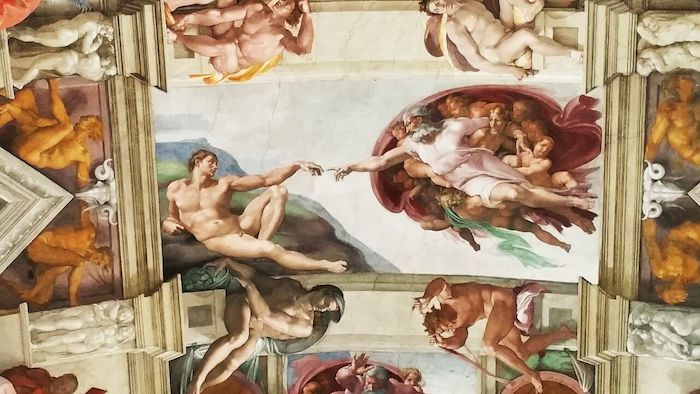
- The Vatican Museums and Sistine Chapel bring in about $90 million dollars annually from ticket sales.
- The English word “nepotism” derives from the Italian word “nipote” meaning “nephew.” This etymology dates back to the 16th century, when Pope Sixtus IV’s nephew Julius also became a pope based off of the principle of favoring familial relations.
- Did Michelangelo paint the Sistine Chapel on his back? Contrary to popular belief, no. Michelangelo actually constructed a platform that allowed him to stand upright while painting the ceiling.
- Michelangelo depicted many of the male nudes on the ceiling with acorns. This hints at Julius II’s family name, Rovere, which means “oak.”
- Michelangelo decided to save his depiction of God until last, so he could hone his craft before having to paint the most difficult image on the entire ceiling.

Privileged Entrance Vatican Tour with Sistine Chapel
Our Privileged Entrance Vatican Tour starts at 7:30 a.m. and we enter the Vatican Museums just after 8 a.m (an hour earlier than general public access). Witness the jaw-dropping Sistine Chapel before the masses stream in.
Here Is Where to Stay in the Most Popular Italian Destinations
Rome, Florence, Venice, the Amalfi Coast, and Capri
I Want More Italy!
- Check out our YouTube video about how to do Rome in a Day. If you’d rather let us guide you, check out our Rome tours.
- Follow our adventures in Italy on Facebook, Instagram, and YouTube. Then, comment and tell us what you want us to cover next.
